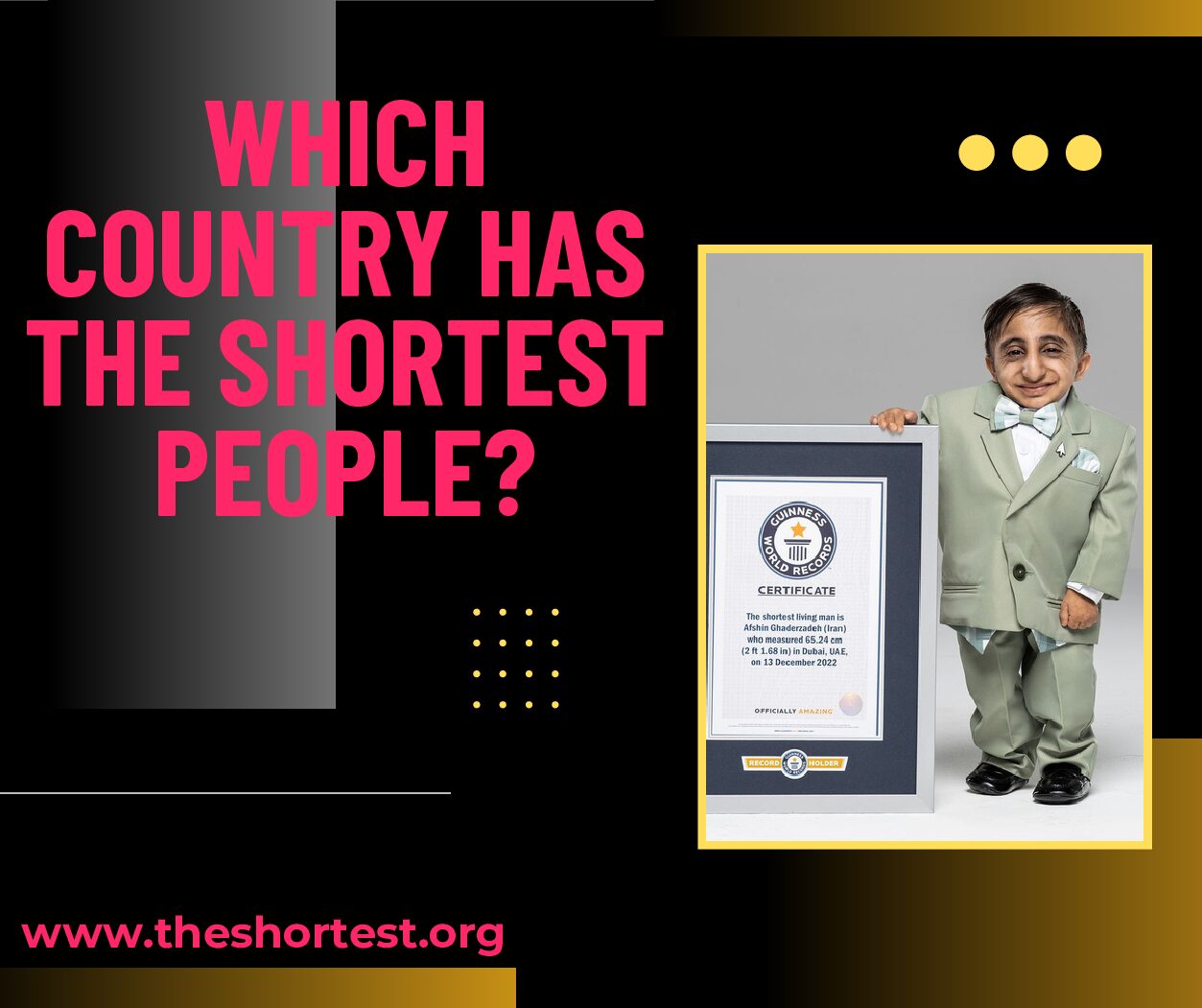Which country has the shortest people? Bolivia stands out, with its population’s shorter stature influenced by genetic and socio-economic factors like limited healthcare and nutrition access.
Sensitivity is crucial since height doesn’t define worth or abilities. Average heights vary within countries due to diet and lifestyle differences.
When discussing height averages, it’s vital to consider broader contexts and avoid oversimplifying assumptions about a country or its people.
shortest people (1)Unveiling the Shortest: A Look at Population, Genetics
Let’s explore which country has the shortest average population height. Height varies widely across cultures.
This article looks into the factors influencing average height and reveals which nation has the shortest people.
Table of Contents
ToggleWhich Country Has the Shortest People: Population Ratios
To find out who’s the shortest, we first need to know how average height is figured out. Usually, surveys or studies in a country measure lots of people to get an average height.
But remember, averages don’t show everything. People’s heights vary, and things like gender and money can affect these numbers.
The Shortest Contender: Which Country Has the Shortest People?
Recent data from sources like World Population Review points to Timor-Leste as the shortest country.
Timorese men average about 1.58 meters (5 feet 2 inches) tall, and women average 1.50 meters (4 feet 11 inches).
This makes Timor-Leste an interesting example for studying shorter average heights.
The Nature vs. Nurture Debate
The height difference in Timor-Leste’s population has multiple factors, including genetics and environment.
Genetics: Genes influence height, with variations in genes related to growth hormone receptors and insulin-like growth factors possibly contributing to shorter stature.
Nutrition: Good nutrition during childhood and adolescence is vital for proper bone development and growth. Historical or ongoing nutritional deficiencies in a population can affect height averages over time.
Disease Burden: Certain diseases, particularly during childhood, can hinder growth and development. If a community faces a high prevalence of such illnesses, it can contribute to a shorter average height.
Socioeconomic Realities: Which Country Has the Shortest People
Considerations beyond height are crucial.
Ergonomics & Infrastructure: The environment, designed for taller people, can be challenging for shorter ones. Tasks like reaching high shelves or using public transport may require adaptations.
Health: Studies hint at a link between shorter height and higher risks of certain health issues, but more research is needed for clarity.
Cultural Views: Height doesn’t determine ability, but societal views can favor taller people, associating height with authority in some cultures.
The Tallest Among the Short
In Timor-Leste, like anywhere else, there’s a variety of heights despite the average being shorter.
Some people might be taller than others, which can make them stand out in a shorter population, though they might face fewer ergonomic challenges.
Synchronization with Neighbors
The International Ergonomics Association (IEA) encourages designing things like equipment and workplaces to fit different body sizes.
Following these guidelines in Southeast Asia can make things like public transport more usable for Timorese and taller people. For example, seats could be adjustable or grab bars placed strategically.
International design standards influence many consumer products, which can help address height-related challenges.
For example, smartphone screen sizes are often standardized, ensuring both Timorese and taller individuals have similar experiences using these devices.
Beyond Standardization
Promoting cultural sensitivity workshops in border regions or areas with frequent interactions between Timorese and taller people can raise awareness about potential biases and encourage open communication to avoid misunderstandings about height.
In Southeast Asia, celebrating diversity by highlighting strengths and achievements regardless of height can foster inclusivity.
Sporting events with mixed teams or joint cultural festivals can be great ways to celebrate this diversity.
Technological Advancements as a Bridge
-
Adjustable Workstations: Technological advancements offer solutions for workplaces with a diverse workforce. Height-adjustable workstations are becoming increasingly common, allowing Timorese individuals to customize their workspace for optimal comfort and productivity.
-
Augmented Reality (AR): AR applications have the potential to bridge the physical gap. Imagine an AR system that overlays visual cues to help Timorese individuals reach for objects on high shelves in a store located in a neighboring country.
The Power of Communication
In business, clear communication is vital across borders. Timorese businesspeople can address height differences by requesting adjustable furniture in meeting rooms during negotiations with taller counterparts.
Effective communication includes non-verbal cues like eye contact and a friendly tone, building trust and rapport regardless of height differences.
Overall, bridging the height gap between Timor-Leste and its neighbors needs a multi-pronged approach.
Standardization, cultural sensitivity, technology, and open communication can create a more inclusive and synchronized region where people of all heights can thrive
